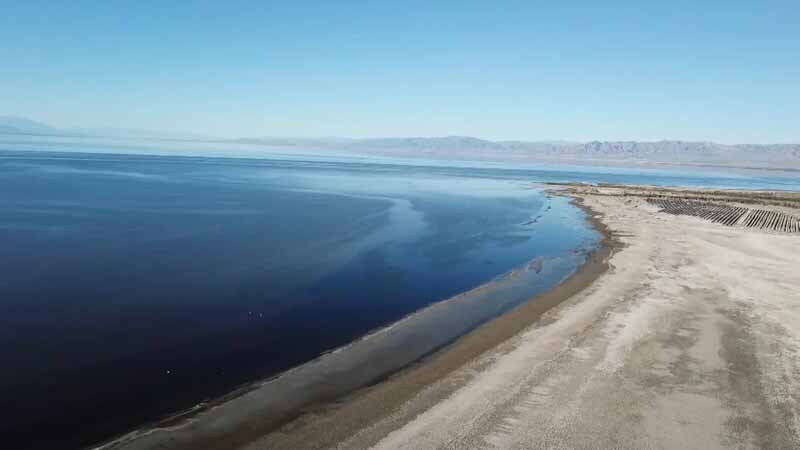 News Staff
News Staff![]() -
September 2, 2023 -
Salton Sea -
Salton Sea Saga continues
-
4.1K views -
0 Comments -
0 Likes -
0 Reviews
-
September 2, 2023 -
Salton Sea -
Salton Sea Saga continues
-
4.1K views -
0 Comments -
0 Likes -
0 Reviews

DLNews JTFmax Salton Sea Saga:
Tate lawmakers and federal officials are focusing on the future of the Salton Sea, with many saying the lithium deposits could change the economic landscape of the Coachella and Imperial Valley. However, those who live in the area have a different perspective on what's at stake for their communities.
The Salton Sea lies between Coachella and Imperial Valley, agriculture hubs that only exist because of massive irrigation. The region has hundreds of thousands of acres of farmland producing millions of dollars worth of food. And those who work that land -- 85% of whom are Latinx and pockets of Indigenous Mexicans, according to local advocates and data collected by the U.S. Census Bureau -- are mainly living in poverty.
Their homes and air are polluted by salty dust from the dry lake bed, contaminated with agricultural chemicals left over decades of farming. The salts and other contaminants, like copper, arsenic, and selenium, are carried by wind to nearby towns and cities, where it is sucked into the lungs of residents. This is a significant factor in a region where pediatric asthma hospitalizations exceed the state average.
The state has a plan for the future of the Salton Sea, which includes building thousands of acres of dust suppression and habitat projects to limit how much contamination is carried into the communities. But it's a race against time, with experts saying it'll be 2047 at the latest before the Sea can reach a level of equilibrium, where the inflow of water from three small streams and agricultural runoff will keep the lake smaller and at a lower elevation.
Until then, the water from the All-American Canal, other irrigation canals, and drainage from Mexico will continue to balance evaporation by supplying constant water. This will lead to a decline in the fishery and expose the soil to erosion as the salinity concentration rises. As the Salton Sea loses its height, it will be exposed to toxic algae and nutrient runoff that harms wildlife and human health.
The Torres Martinez Desert Cahuilla Tribe, which administers thousands of acres, including wetlands, critical habitat, lake shore, and lands underlying the Sea, is an essential partner in this effort. The tribe's history and unique relationship with the area ensures that its concerns are considered as a phased approach to restoration is implemented and that the most pressing issue — salinity — is addressed with due haste. Delaying this will accelerate the decline of critical components of the ecosystem, including the collapse of the fishery and the loss of birds that depend on the Sea for their survival. For these reasons, the Department supports the Phase One options. But a successful project will also require continued partnerships and cooperation between federal, state, and local agencies, scientists, and project management teams.
Salton Sea Saga and Lithium continues.

At Desert Local News, connections are everything. We're not just another social networking platform—we're a lively hub where people from all walks of life come together to share stories, spark ideas, and grow together. Here, creativity flourishes, communities grow stronger, and conversations spark global awareness.